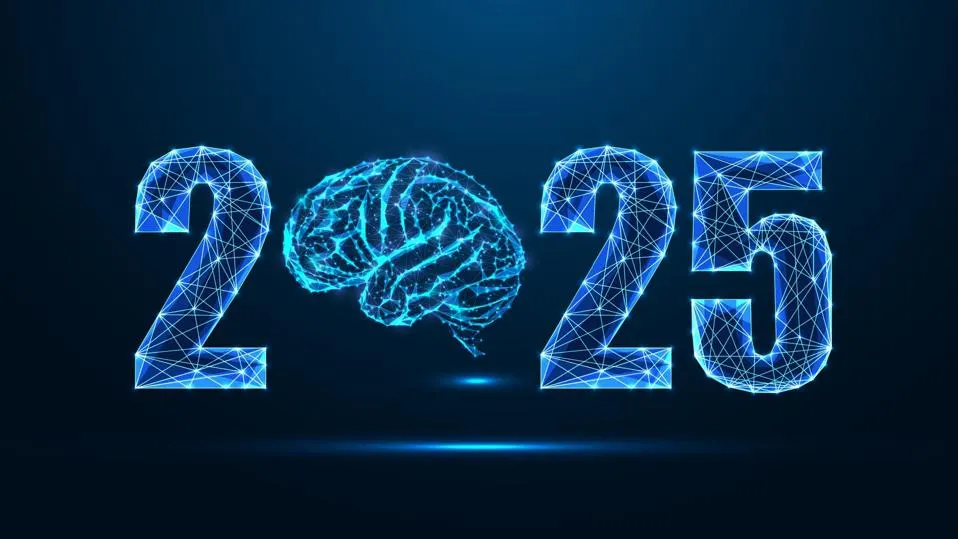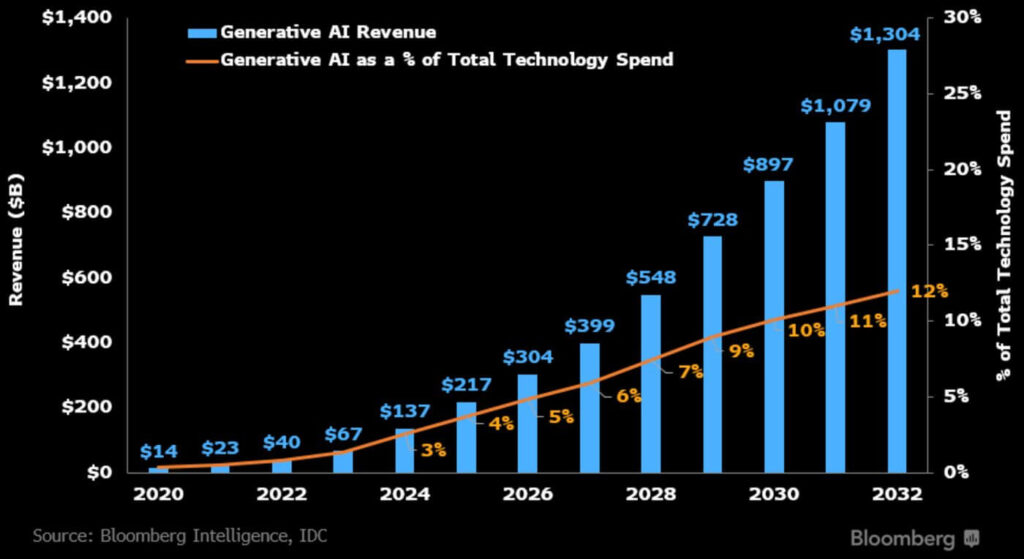Artificial Intelligence (AI) has come a long way in just a few short years. From simple chatbots and recommendation systems to machines that write poetry and diagnose diseases, the pace of innovation has been nothing short of astonishing. As we step into 2025, the AI landscape is poised to experience breakthroughs that could redefine the way we live, work, and interact.
These innovations go far beyond basic automation. We’re talking about AI agents that think across disciplines, humanoid robots that can assist the elderly, and neural links that let you type with your thoughts. Curious? Let’s explore the top 7 AI breakthroughs to watch in 2025—each promising to change the world in remarkable ways.
1. Generalist AI Agents for Daily Life
The age of narrow AI—tools trained to perform just one task—is quickly giving way to generalist AI agents capable of multi-tasking across domains. These next-gen agents don’t just answer questions; they cook meals, organize your calendar, and provide mental health support.
Key Capabilities of Generalist AI Agents:
- Multi-modality: Understanding voice, text, images, and video simultaneously.
- Context awareness: Remembering prior conversations and long-term preferences.
- Real-world actions: Integrating with IoT devices to control lights, appliances, and vehicles.
Companies like OpenAI, Google DeepMind, and Anthropic are building models that understand context and intent like never before, ushering in a new era of intelligent digital assistants.
2. Next-Gen Generative AI (Text, Code & Video)
Generative AI exploded onto the scene with tools like ChatGPT, Midjourney, and Sora. But 2025 is bringing even more powerful versions capable of:
- Generating realistic, high-quality video from simple prompts.
- Combining modalities—generating images based on sounds or videos from written stories.
- Writing complex code with minimal human guidance.
These tools are moving closer to true creativity augmentation, helping artists, writers, and developers scale their productivity without losing the human touch.
3. Autonomous AI in Robotics
Robots are no longer just factory machines. With AI integration, they are becoming intelligent, responsive, and autonomous systems capable of performing tasks alongside humans.
Applications Include:
- Humanoid caregivers in healthcare facilities.
- Warehouse automation with predictive object recognition.
- AI-driven delivery drones and self-driving vehicles.
Thanks to edge AI chips, many of these robots can operate without a constant internet connection, processing data locally to make split-second decisions.
4. AI and Human Brain Integration
What was once science fiction is now becoming reality. Brain-computer interfaces (BCIs) are being developed to allow direct communication between the human brain and machines.
Emerging Capabilities:
- Typing with your thoughts.
- Controlling prosthetic limbs with neural signals.
- Enhancing memory and learning speed via AI-powered implants.
Companies like Neuralink and Synchron are pioneering this space, raising profound ethical and privacy questions—but also immense potential for medical breakthroughs.
5. AI-Powered Drug Discovery and Medical Diagnosis
AI is revolutionizing medicine by dramatically speeding up research timelines and enhancing diagnostic precision.
- Drug discovery that used to take years now happens in months.
- AI imaging tools can detect cancer, stroke, or retinal issues early.
- Predictive analytics enables early intervention in chronic illnesses.
Hospitals and biotech firms worldwide are investing in AI platforms to tailor treatments and predict patient outcomes more accurately than ever before.
6. AI in Cybersecurity and Threat Prevention
With the increasing complexity of cyber threats, AI is becoming essential in identifying, preventing, and even responding to attacks in real-time.
- Self-learning algorithms detect anomalies faster than human analysts.
- AI-managed firewalls can adapt to new threats on the fly.
- Threat simulation using generative AI helps prepare for worst-case scenarios.
This is a digital arms race—where AI is both the sword and the shield.
7. AI Governance and Regulation Breakthroughs
As AI systems become more powerful, global governments and tech leaders are finally taking steps toward meaningful AI regulation and governance.
Key Developments Expected in 2025:
- International frameworks for AI safety and ethical standards.
- Requirements for model transparency and explainability.
- Stronger action against deepfakes and misinformation.
While progress is uneven across regions, a consensus is emerging: AI must be safe, fair, and accountable.
Industry Implications of These AI Advancements
The top 7 AI breakthroughs to watch in 2025 are more than just technical marvels—they’re catalysts for economic transformation across industries.
Key Industry Shifts Include:
- Healthcare: Reduced diagnostic errors and faster treatment cycles.
- Finance: AI-driven portfolio management and fraud prevention.
- Manufacturing: Predictive maintenance and intelligent automation.
- Retail: Hyper-personalized customer experiences using AI analytics.
These changes demand new skills and roles in the workforce, prompting businesses to reskill employees and rethink long-term strategies.
Ethical Concerns and Challenges
As AI capabilities soar, so do concerns about ethics, bias, and unintended consequences. The biggest fears stem from:
- AI bias from flawed training datasets.
- Deepfake technology spreading disinformation.
- Lack of transparency in decision-making models (black box AI).
- Data privacy risks, especially with generative and surveillance AI.
To address these issues, experts stress the importance of human-centered design, auditability, and global ethical standards for AI development.
Leading Companies Driving AI in 2025
Several key players are shaping the future of AI, each contributing to the rapid evolution of this field.
| Company | AI Contribution |
|---|---|
| OpenAI | Multimodal agents, generative tools like GPT & Sora |
| Google DeepMind | Generalist AI (Gemini), reinforcement learning |
| Anthropic | Constitutional AI and model safety frameworks |
| NVIDIA | AI hardware acceleration and ecosystem development |
| Microsoft | Copilot and enterprise AI integration |
| Amazon | AI in logistics, commerce, and Alexa smart home |
| Neuralink | Brain-computer interface innovation |
These organizations are not just innovating—they’re also driving public conversation about AI’s role in society.
Real-World Applications Already Emerging
While some breakthroughs are still in the lab, others are already entering the mainstream. Let’s look at where AI is actively improving lives:
- Smart Homes: Voice-activated systems managing everything from lighting to security.
- Education: AI tutors offering real-time feedback and adaptive learning paths.
- Finance: AI chatbots handling complex customer queries and fraud alerts.
- Agriculture: AI drones and sensors optimizing crop yields and resource use.
- Legal: AI-powered contract analysis and case research tools speeding up legal work.
These examples prove that AI is not just theoretical—it’s here and growing rapidly.
Investment and Market Trends in AI
AI has become one of the most lucrative and dynamic investment arenas of the 21st century. In 2025, analysts expect:
- Global AI spending to exceed $500 billion.
- Venture capital to pour into AI startups, especially those in health, robotics, and climate tech.
- AI-as-a-Service (AIaaS) platforms gaining traction across small and mid-sized enterprises.
- Governments to allocate more funds toward AI research and national innovation programs.
According to a report from McKinsey, businesses that adopt AI early will outperform their peers by over 20% in productivity and profitability metrics.
The Future of AI Collaboration Between Humans and Machines
Rather than replacing humans, AI is increasingly being designed to augment human intelligence and capabilities.
Promising Trends:
- Human-in-the-loop systems ensure oversight in high-risk domains like healthcare and law.
- Symbiotic workspaces where AI handles the repetitive tasks, letting humans focus on creativity and strategy.
- Emotional AI that responds empathetically to user moods, creating more natural interactions.
The goal? Create systems where humans and machines collaborate, not compete.
Conclusion
The top 7 AI breakthroughs to watch in 2025 signal a transformative shift in human capability. From reshaping healthcare and cybersecurity to redefining creativity and communication, AI is not just a tool—it’s becoming a collaborative force in every sector.
But with great power comes great responsibility. As we navigate this next phase of the AI revolution, it’s essential to ensure that these tools are safe, ethical, inclusive, and beneficial for all.
2025 isn’t just another milestone it’s a launching point for a smarter, more connected, and potentially more equitable future.


